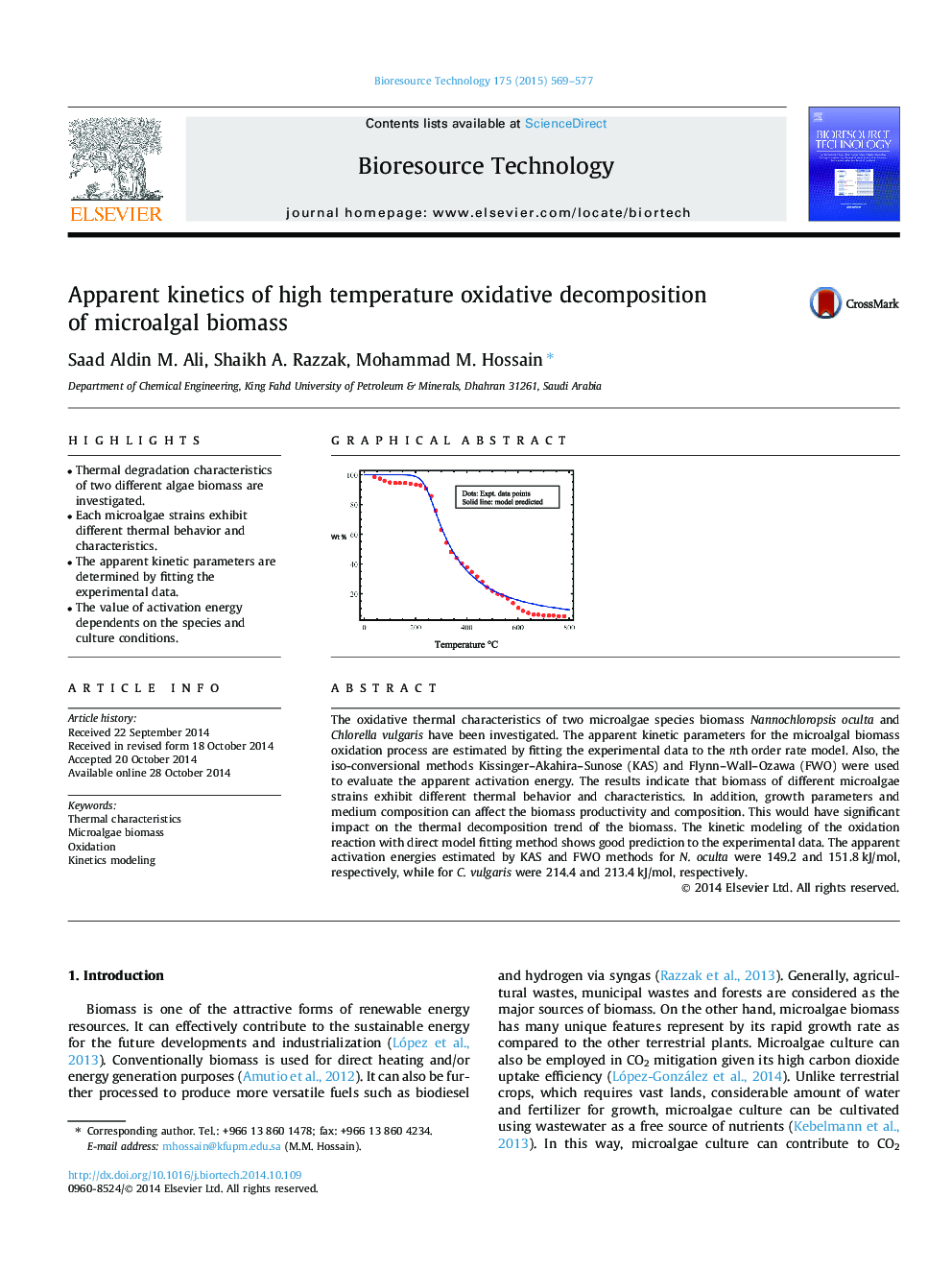| Article ID | Journal | Published Year | Pages | File Type |
|---|---|---|---|---|
| 680309 | Bioresource Technology | 2015 | 9 Pages |
•Thermal degradation characteristics of two different algae biomass are investigated.•Each microalgae strains exhibit different thermal behavior and characteristics.•The apparent kinetic parameters are determined by fitting the experimental data.•The value of activation energy dependents on the species and culture conditions.
The oxidative thermal characteristics of two microalgae species biomass Nannochloropsis oculta and Chlorella vulgaris have been investigated. The apparent kinetic parameters for the microalgal biomass oxidation process are estimated by fitting the experimental data to the nth order rate model. Also, the iso-conversional methods Kissinger–Akahira–Sunose (KAS) and Flynn–Wall–Ozawa (FWO) were used to evaluate the apparent activation energy. The results indicate that biomass of different microalgae strains exhibit different thermal behavior and characteristics. In addition, growth parameters and medium composition can affect the biomass productivity and composition. This would have significant impact on the thermal decomposition trend of the biomass. The kinetic modeling of the oxidation reaction with direct model fitting method shows good prediction to the experimental data. The apparent activation energies estimated by KAS and FWO methods for N. oculta were 149.2 and 151.8 kJ/mol, respectively, while for C. vulgaris were 214.4 and 213.4 kJ/mol, respectively.
Graphical abstractFigure optionsDownload full-size imageDownload as PowerPoint slide
